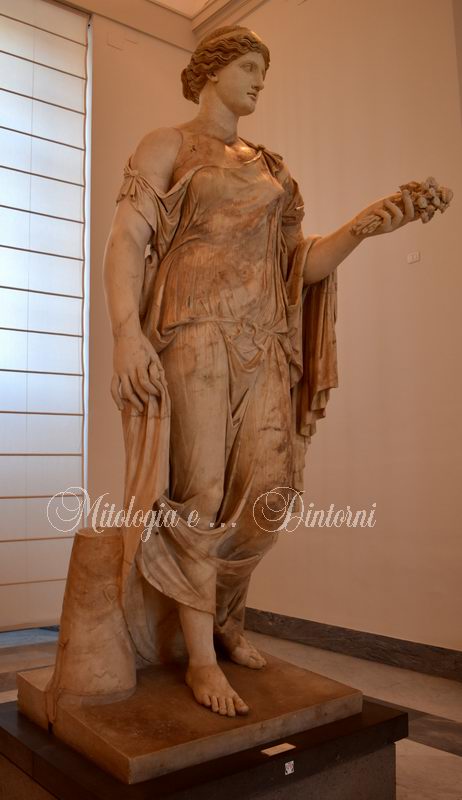Indice dei Musei
presenti in miti3000
Napoli Museo Nazionale - Piano Terra - Collezione Farnese - sala XIII
Testo
cd. Flora maggiore
inv. 6409. Creazione romana, II secolo d.C.
La statua è una creazione di età romana basata sullo schema iconografico creato ad Atene alla fine del V sec. a.C. per una immagine di Afrodite. All'invenzione del copista si deve l'aggiunta della cintura annodata ai fianchi. Questa foggia dell'abbigliamento corrisponde ad una moda diffusa intorno alla metà del II sec. d.C.. A questa epoca o poco più tardi si data la statua Farnese.
Essa appare, acefala e priva delle estremità, in un disegno di Maarten van Heemskerck, artista attivo a Roma tra il 1532 e il 1536 ed in un disegno anonimo degli inizi del XVI secolo. Si può pertanto escludere la provenienza dalle Terme, dove i Farnese cominciarono gli scavi a partire dal 1545.
L'identificazione con Flora, dea della natura, risale alla tradizione antiquaria avallata dai restauri di Guglielmo della Porta, che la dotò di una testa coronata di fiori e di una ghirlanda nella mano destra. Queste integrazioni furono sostituite, a fine '700, da quelle di Carlo Albacini. Dopo il suo arrivo a Napoli, Filippo Tagliolini rifece la testa in gesso e sostituì la ghirlanda cinquecentesca con un bouquet di fiori.
The so-called Flora Maior
inv. 6409. Roman creation, 2nd century AD.
This statue is a Roman-period creation based on a model created at Athens to depict Aphrodite at the end of the 5th century BC. The belt knotted at the sides is to be attributed to the copyist. This style of dress is similar to a fashion popular in the mid-2nd century AD. The Farnese statue must date to this period, or later. Flore Maior appears headless and lacking its extremities in a drawing by Maarten van Heemskerck, an artist active at Rome between 1532 and 1536, and in an anonymous drawing from the beginning of the 16th century. Thus it could not have come from the Baths, since the Farnese began to excavate here after 1545.
The identification of the statue as Flora, goddess of nature, derived from an antiquarian tradition and was reinforced by the restorations made by Guglielmo della Porta, who gave her a head crowned with flowers and a garland in her right hand. These additions were replaced by those of Carlo Albacini at the end of the 18th century. After he arrived in Naples, Filippo Tagliolini remade the head in plaster and replaced the 16th century garland with a bouquet of flowers.

Clicca sulle varie parti dell'immagine per i particolari
Fotografie di Giorgio Manusakis
